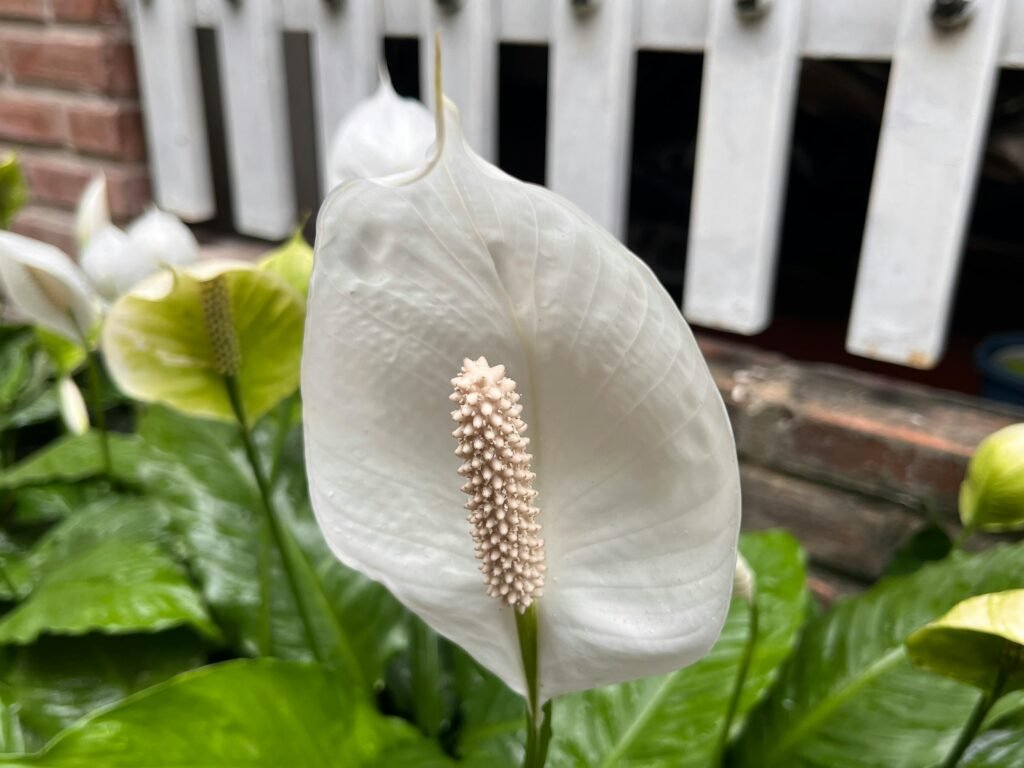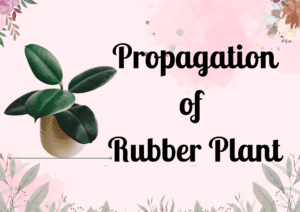Peace lilies are a favorite among indoor plant enthusiasts, and it’s not hard to see why. Their lush green leaves and striking white blooms add a touch of elegance to any room. But if you’re like most peace lily owners, you’ve probably found yourself eagerly waiting for those beautiful flowers to appear—and maybe wondering why they aren’t blooming as often as you’d like.
If you’re curious about how often peace lilies bloom and what you can do to encourage more frequent flowering, you’re in the right place. In this blog, we’ll dive into the blooming cycle of peace lilies, explore the factors that influence their flowers, and share some practical tips to help your plant thrive. So, let’s get started on your journey to more blooms!
Table of Contents
Understanding the Blooming Cycle of Peace Lily
So, how often can you expect your peace lily to bloom? Well, peace lilies typically bloom once or twice a year, but like all living things, they have their quirks. When they do bloom, those lovely white flowers can stick around for several weeks, making the wait totally worth it.
But here’s the thing: the frequency of blooming isn’t set in stone. A lot depends on how you care for your plant and the environment it’s in. Light, temperature, humidity, and even the way you water and feed your peace lily all play a role in how often those blooms make an appearance.
In this section, we’ll break down these factors so you can understand what might be influencing your peace lily’s blooming cycle. By the end, you’ll have a clearer idea of what to expect from your plant and how to help it reach its full blooming potential. Let’s dig in!
Key Factors Affecting Peace Lily Blooming
Let’s dive into the nitty-gritty of what really makes a peace lily bloom—or not. It’s easy to think that as long as you water your plant and give it some light, you’ll be rewarded with flowers. But peace lilies can be a bit more particular than that. Here’s a breakdown of the key factors that can either encourage those blooms or keep them from showing up.
Light Requirements
First things first: light. Peace lilies thrive in bright, indirect light. Think of it like this—they don’t want to be sunbathing all day, but they also don’t want to be stuck in a dark corner. Too much direct sunlight can scorch their leaves, while too little light can leave them bloomless. The sweet spot? A place where they get plenty of natural light but aren’t exposed to harsh rays. If you’re struggling with low light, consider moving your plant closer to a window or supplementing with a grow light.
Temperature and Humidity
Being tropical plants, peace lilies enjoy warmth and humidity. They’re happiest in temperatures between 65-85°F (18-29°C). If your home gets too chilly or the air is too dry, your peace lily might decide to skip blooming altogether. Try to keep the temperature steady and consider placing a humidifier nearby if you live in a particularly dry climate. Your peace lily will thank you with more blooms.
Proper Watering and Fertilization
Watering can be tricky—peace lilies like their soil to stay moist, but not soggy. Overwatering can lead to root rot, which is a surefire way to stress your plant and prevent blooms. Let the top inch of soil dry out before giving your plant a good drink. And don’t forget about feeding! A balanced fertilizer every six weeks or so during the growing season can give your peace lily the nutrients it needs to produce flowers.
Now that you know what your peace lily needs, you’re on your way to enjoying more frequent and vibrant blooms. In the next section, we’ll talk about some common reasons why your peace lily might not be blooming and how to fix them. Stay tuned!

Common Reasons Why Peace Lilies Might Not Bloom
So, you’ve been doing everything right—providing light, keeping the temperature just right, watering carefully—and still, no blooms. It can be frustrating, but don’t worry! There are a few common reasons why your peace lily might be holding back on those beautiful flowers. Let’s troubleshoot together.
Insufficient Light
One of the most common culprits behind a bloomless peace lily is not enough light. Remember, peace lilies need that perfect balance of bright, indirect light. If your plant is sitting in a spot that’s too dim, it might focus all its energy on just surviving instead of flowering. Try moving your peace lily to a brighter location—near a north or east-facing window could be perfect. If you notice the leaves turning yellow, that’s a sign your plant might be getting too much direct sunlight, so find a spot with filtered light instead.
Improper Care Practices
Sometimes, peace lilies don’t bloom because they’re not getting the TLC they need. Maybe the soil isn’t draining well, or you’re watering a little too much or too little. It’s all about balance. Check the soil—if it’s too compacted, it might be time to repot your peace lily in fresh, well-draining soil. And make sure you’re sticking to a regular watering schedule, letting the top inch of soil dry out before you water again.
Plant Age and Maturity
Unbelievably, age is important! Your peace lily may not be old enough to blossom if it is still young. The majority of peace lilies require reaching a specific maturity level prior to flowering. Thus, exercise patience if your plant is still a young one. It will begin to blossom on its own schedule if given the proper care.
Stress Factors
Stress can really mess with your peace lily’s blooming cycle. Things like sudden temperature changes, drafts, or even repotting can stress your plant out, making it less likely to bloom. If you’ve recently moved your peace lily or changed its environment, it might just need some time to adjust. Keep an eye on it and try to minimize any sudden changes to its surroundings.
By identifying and addressing these issues, you’ll be well on your way to helping your peace lily bloom beautifully. Up next, we’ll share some tips on how to encourage more frequent blooming, so you can enjoy those gorgeous white flowers all year round!
How to Encourage More Frequent Blooming
Alright, now that we’ve covered some of the common reasons your peace lily might not be blooming, let’s talk about how you can give it a little nudge in the right direction. With a few tweaks to your care routine, you can help your peace lily bloom more often and more abundantly. Here’s how.
Optimizing Light Conditions
Light is everything when it comes to blooming. If you want more flowers, make sure your peace lily is getting plenty of bright, indirect light. A spot near a window that gets morning sun or filtered light throughout the day is ideal. If your home doesn’t have enough natural light, don’t worry—there are plenty of affordable grow lights that can give your peace lily the boost it needs. Just remember, too much direct sunlight can be harmful, so avoid placing your plant in the hot afternoon sun.
Ensuring Proper Watering and Feeding
When it comes to tending to your peace lily, consistency is essential. Maintain a regular routine and make sure that before you water again, the top inch of soil dries off. If you overwater your plants, you risk causing root rot, which will suppress those blooms. In terms of feeding, using a balanced fertilizer about every six weeks throughout the spring and summer growing season can be quite beneficial. Just exercise caution to avoid overfertilizing, since this may have unfavorable effects. Imagine it like adding a little additional vitality to your peace lily so it will bloom those lovely blossoms.
Creating an Ideal Environment
Your peace lily is a tropical plant at heart, so it loves warmth and humidity. Keeping the temperature between 65-85°F (18-29°C) is ideal. If you live in a dry climate or run the heater a lot, consider placing a humidifier near your plant or misting its leaves regularly. You can also group it with other plants to create a more humid microenvironment. The more comfortable your peace lily feels, the more likely it is to bloom.
Regular Maintenance
Not to mention, don’t overlook routine maintenance. Periodically brush the leaves to get rid of dust and improve their ability to absorb light. To maintain your plant looking its best and to focus its energy on flowering, remove any dead or yellowing leaves that you detect. Your peace lily will bloom more readily if you give it regular trimming and a little tender care.
With these tips, you’ll be well on your way to enjoying more frequent and vibrant blooms from your peace lily. In the next section, we’ll talk about the natural blooming patterns of peace lilies, so you know what to expect throughout the year. Stay tuned!
Seasonal Blooming Patterns
Now that we’ve covered how to encourage more blooms, let’s talk about what to expect from your peace lily throughout the year. Just like us, peace lilies have their own rhythm, and understanding their natural blooming patterns can help you manage your expectations and care routine.
Spring and Summer Blooming
Spring and summer are the prime blooming seasons for peace lilies. When the days get longer and the light becomes more intense, your peace lily is likely to respond with a burst of beautiful white flowers. This is the time when all your care efforts really pay off! You might notice your plant starting to produce buds as early as late winter, and by spring, those buds should start to open up. If you’ve been keeping up with proper light, watering, and feeding, this is when your peace lily will be at its best.
Dormant Periods
Just like how we need a break sometimes, peace lilies also have their down time. During the fall and winter months, your peace lily may go into a sort of resting phase. It’s not unusual for blooming to slow down or even stop altogether during these cooler, shorter days. Don’t worry—this is totally normal! Your peace lily is conserving energy, getting ready for the next round of blooming when the conditions are right again.
During these dormant periods, it’s important to continue caring for your peace lily, but you can ease up a bit. Reduce watering slightly, and hold off on fertilizing until you see new growth in the spring. Think of this as a time for your peace lily to recharge so it can bloom even more beautifully when the time comes.
Understanding these seasonal patterns will help you know what to expect from your peace lily and how to adjust your care routine throughout the year. Up next, we’ll discuss what to do after your peace lily has finished blooming, so you can keep your plant healthy and ready for the next blooming cycle. Keep reading!
What to Expect After Blooming
So, your peace lily has treated you to a gorgeous display of flowers, and now those blooms are starting to fade. What’s next? Don’t worry—this is all part of the natural cycle. Here’s what to do after your peace lily has finished blooming to keep it happy and healthy.
Post-Bloom Care
Once those stunning white flowers start to wilt and turn brown, it’s time to give your peace lily a little post-bloom TLC. You’ll want to remove the spent blooms by cutting the flower stalks down at the base. This helps the plant redirect its energy from maintaining old flowers to producing new growth. It also keeps your peace lily looking tidy and fresh.
But don’t just stop there! Even though your peace lily isn’t blooming, it still needs your care. Continue to water it regularly, ensuring the soil stays moist but not soggy. If you’re using fertilizer, you can cut back a bit during this non-blooming period, but don’t stop completely—your plant still needs nutrients to stay strong.
Preparing for the Next Bloom Cycle
After your peace lily has finished blooming, it’s a good time to think about the next round of flowers. Consider giving your plant a little refresh by checking if it needs repotting. If the roots are starting to crowd the pot, repotting into a slightly larger container with fresh soil can give your peace lily the space it needs to thrive.
This is also a great time to evaluate the plant’s environment. Is it getting enough light? Is the temperature and humidity just right? Making sure these conditions are optimal will help set your peace lily up for another beautiful blooming cycle.
By taking care of your peace lily after it blooms, you’re not just maintaining the plant—you’re setting the stage for future flowers. In the next section, we’ll wrap things up with a quick recap and some final tips to keep your peace lily blooming beautifully. Stay tuned!
Conclusion
And there you have it—a full guide to understanding the blooming cycle of your peace lily! From the excitement of those first blooms in spring and summer to the quieter, restful periods in fall and winter, your peace lily goes through a natural rhythm that’s fascinating to watch.
Remember, the key to more frequent blooms lies in giving your peace lily the right amount of light, warmth, and care. Keep an eye on its environment, water it properly, and don’t forget to give it some love with a bit of fertilizer during the growing season. And if your peace lily isn’t blooming as often as you’d like, don’t stress—patience and consistent care will eventually pay off.
By understanding and working with your peace lily’s natural cycle, you’ll be rewarded with beautiful blooms that brighten up your space and bring a little extra joy to your home. So keep caring for your peace lily, and enjoy the journey as you help it flourish.
YOU CAN ALSO VISIT OUR OTHER BLOG POST ON “PEACE LILY“
- Are Peace Lilies Toxic to Cats? Essential Safety Tips for Cat Owners
- Why Your Peace Lily Isn’t Flowering and How to Fix It
- 7 Reasons Why Peace Lillies Have Brown Leaf Tips and How to Fix It
- Why Are My Peace Lily Leaves Turning Yellow? Top Causes and Easy Solutions
- 5 Common Peace Lily Diseases: Identification and Treatment Guide
FAQs
Q: How often do peace lilies typically bloom?
A: Peace lilies usually bloom once or twice a year, primarily during the spring and summer months.
Q: What should I do if my peace lily isn’t blooming?
A: Check if your peace lily is getting enough bright, indirect light and ensure you’re following proper watering and fertilizing practices. Also, consider the plant’s age and the possibility of stress factors like temperature changes or drafts.
Q: How long do peace lily blooms last?
A: Peace lily blooms can last several weeks, sometimes even up to two months, with proper care.
Q: Can I make my peace lily bloom more often?
A: While you can’t force a peace lily to bloom, you can encourage more frequent flowering by optimizing light conditions, maintaining consistent watering, feeding regularly, and providing a stable, warm environment.
Q: Is it normal for peace lilies to stop blooming in the winter?
A: Yes, it’s completely normal for peace lilies to enter a dormant phase during the fall and winter months when they’re less likely to bloom.





Pingback: Best Places to Put a Peace Lily: Top Rooms for Optimal Growth and Care - Garden Gossips